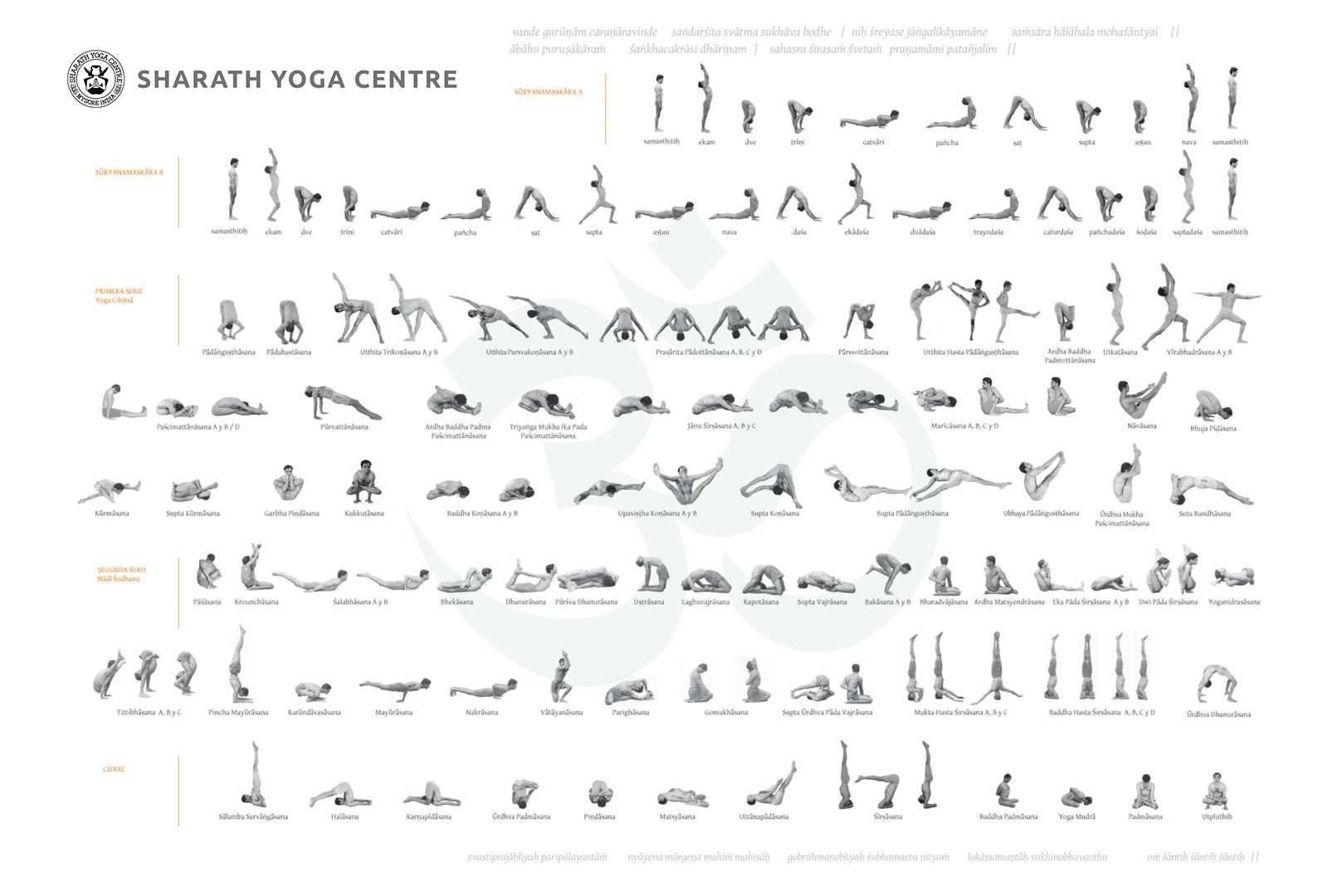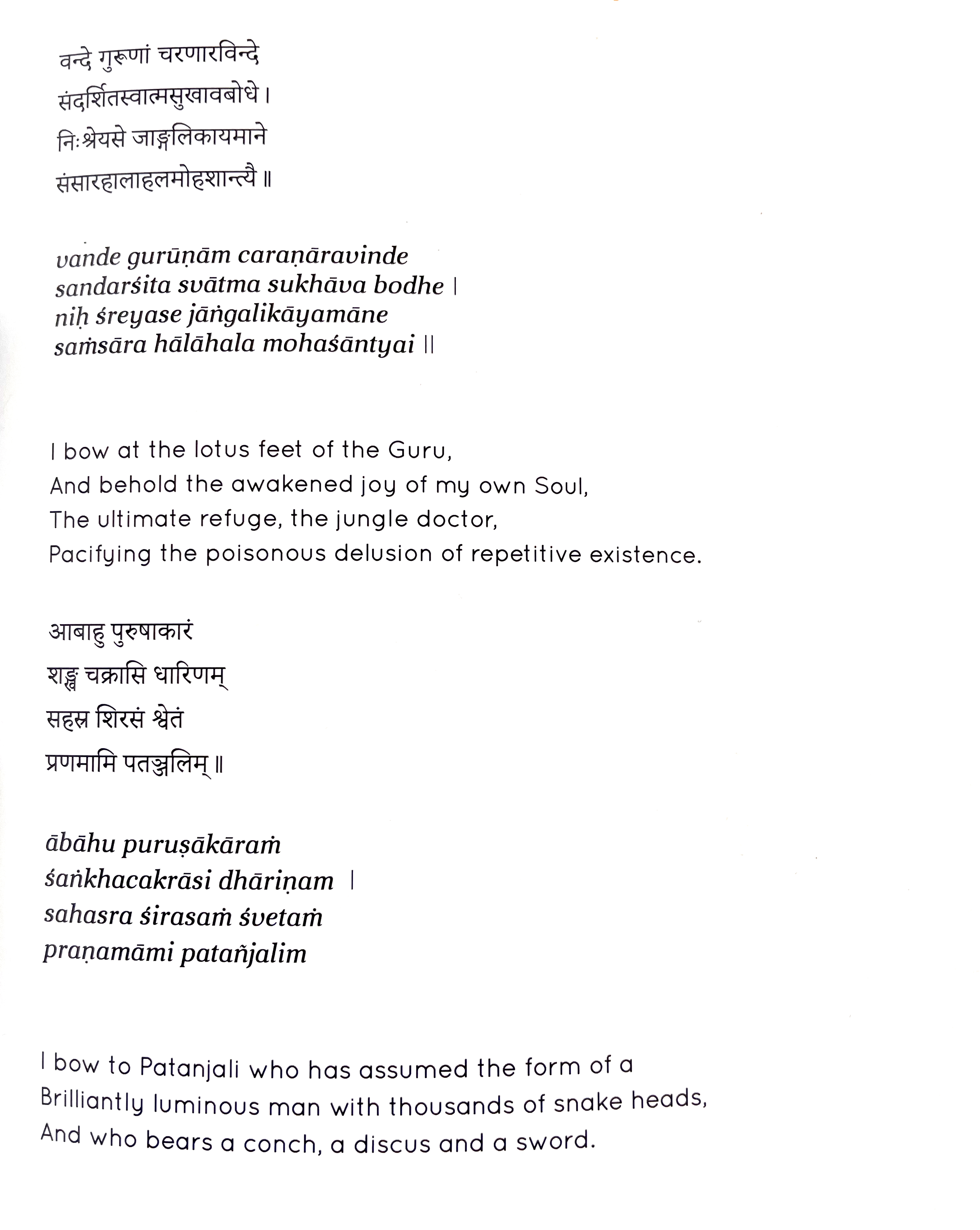![]() Ashtanga Narayani
Ashtanga Narayani
What is Ashtanga Yoga?
Ashtanga Yoga is a daily method of yoga involving synchronizing the breath with a progressive series of postures. This process produces intense internal heat and a purifying sweat that detoxifies muscles and organs. The results are improved circulation, a light and strong body and a calm mind.
Ashtanga is traditionally taught in the “Mysore” style: a supervised self-practice. The same series of asanas (poses) are practiced each day. New poses are introduced by the teacher once the student memorizes and becomes proficient in the previous asanas in the sequence. People of all ages and health can practice Ashtanga. A student works with the teacher to advance at their own rate.*Source*: Ashtanga Yoga Nilayam
Where does Ashtanga Yoga come from?
The term “Ashtanga Yoga” comes from the Yoga Sutras of Patanjali, a nonsectarian philosophy condensed into a series of succinct phrases encapsulating 8 limbs of yoga practice and philosophy transcribed from an oral teaching thousands of years old.
The Ashtanga sequence of postures and vinyasa-krama (movement with breath) methodology taught at Ashtanga Narayani comes from the South Indian city of Mysore, where the system was refined and shared by Krishnamacharya through the royal palace in Mysore in the 1920s. Krishnamacharya learned this practice from his teacher Rama Mohan Bramachari in the Himalayas.
What can I expect in my first class?
This system is passed on directly from teacher to student, generation to generation. Though the structure and method stays intact, it’s given new life and meaning with each student ready to begin their practice.
Ashtanga yoga builds upon a 4-6 day/week practice (rest on Saturdays and new/full moons) and is taught one-on-one in a small group setting. You will start with sun salutations A & B, standing asanas, and into the primary series, methodically guided through the traditional gazing points, movements, and breaths. Note that your initial practice will take 45 min - 1 hour.
What can I do to best prepare for practice?
I recommended practitioners to drink water when first waking up and to take a hot shower before practice whenever possible. This will ensure you stay hydrated, warm up your body, and reduce distraction in the practice space. Please do your best to reduce any extraneous stretches and movements while practicing to maintain a level of focus in the room for yourself and others. I welcome and encourage you to sit in meditation and mindful breathing at the end of your practice.
As the moon cycles, its gravitational pull affects the tides, the movement of water within the earth, plants, organisms, and within our bodies. This is especially noticeable on new and full moon days, and in this particular method we take advantage of these days to rest. Mysore practice takes a pause on these days and the shala is closed for rest.
How do I start committing my practice sequence to memory?
You may refer to the following chart for review pre/post-practice. Memorization takes time and persistence, simply try your best to practice by memory when arriving in the shala, stay present, and enjoy the process.
What do the opening and closing chants mean, and do I have to chant?
What reading is recommended to support my practice?
Should I expect physical adjustments and assistance?
Should I practice on my menstrual cycle?
I have an injury or pre-existing condition, can I still come to practice?
Do you offer sliding scale or alternative payment options?
Below are the translations of the opening and closing chants. All practitioners are encouraged to chant outloud to open and close their practice, as the vibrations and meanings instill a sense of wellbeing and help support and deepen one’s practice. Practitioners uncomfortable with these may use words and intentions aligned with their own spiritual traditions and/or direct experience.
The opening chant consists of the following Sanskrit chants, the first from the Yoga Tārāvalī and the second, respects paid to Patañjali, the author of the Yoga Sutras.1
The closing chant is known as the Mangala Mantra from the Rig Veda:
Svasti prajābhyaḥ
paripālayantāṁ nyāyena mārgeṇa mahīṁ mahīśāḥ
gobrāmaṇebhyaḥ śubhamastu nityaṁ
lokāḥ samastāḥ sukhino bhavantu
Om śāntiḥ śāntiḥ śāntiḥ
May all be well with mankind.
May the leaders of the earth protect in every way by keeping to the right path.
May there be goodness for all those who know the earth to be sacred.
May all the worlds be happy.2
What reading is recommended to support my practice?
Self-study (known as svadhyaya in sanskrit) is often interpreted as reading source-texts and spiritual stories and philosophy, and is always encouraged. The shala has a small library available for practitioners to reference and peruse. Here also is a list of recommended reading: Yoga Mala by Sri K Pattabhi Jois, Ashtanga Yoga Anusthana by R. Sharath Jois, Old Path White Clouds by Thich Nhat Hanh, The Mahabharata by Krishna Dharma, The Yoga Vasistha by Swami Venkatesananda, Light on the Yoga Sutras by BKS Iyengar, Yoga Yajnavalkya by Gargi Vachaknavi and Yajnavalkya, The Yoga Sutras of Patanjali (Books I-IV) by Baba Hari Dass, The Songs of Milarepa.
Should I expect physical adjustments and assistance?
I honor an agreement of mutual respect and equality within the shala and strive to create a safe container for each individual’s practice, careful to offer physical assistance with consent, and after careful observation of each individual’s practice. I ask that you please communicate when physical touch is unwanted. If you have any physical injuries or history that you feel I should be aware of to better support you and your practice, please communicate with me in the shala or contact me here if you need to reach me outside of class.
Should I practice on my menstrual cycle?
This practice actively pulls the core of the body’s engagement upward, subtly impeding the downward movement of apana vayu (downward moving prana). This being the case, menstruating practitioners are advised to rest from practice for the first 3 days of their cycle to allow apana to flow downward without any restriction to maximize the healing and restorative benefits of this time in their cycle.
I have an injury or pre-existing condition, can I still come to practice?
The method taught at Ashtanga Narayani is offered to individuals of all life experiences. Modifications and suggestions can be helpful in certain instances, so please let me know if you have any conditions, injuries, or concerns so we can mindfully consider them as you practice. Moving carefully with each breath gives us access to the deep healing qualities of the practice. There are blankets and bolsters available in the shala for all practitioners, and are helpful for days when extra support and softness might be needed.
Do you offer sliding scale or alternative payment options?
Sliding scale and alternative payment options are available for all committed students who might be experiencing financial hardship, and are prioritized for indigenous, trans, and POC practitioners, public school teachers, and caretakers to support regular and sustaining practice. Please reach out before signing up to discuss options.
Any other questions?
Find me at the shala, or e-mail me here at ashtanganarayani@gmail.com.
 Ashtanga Narayani
Ashtanga Narayani
